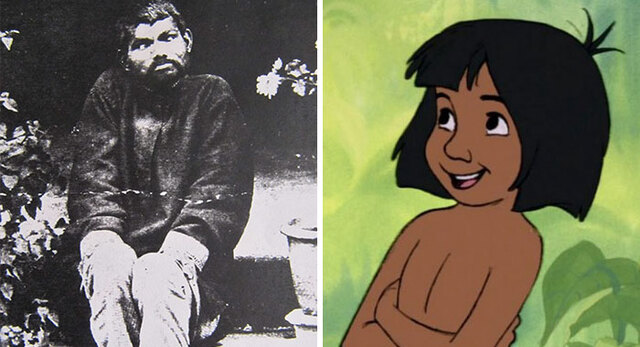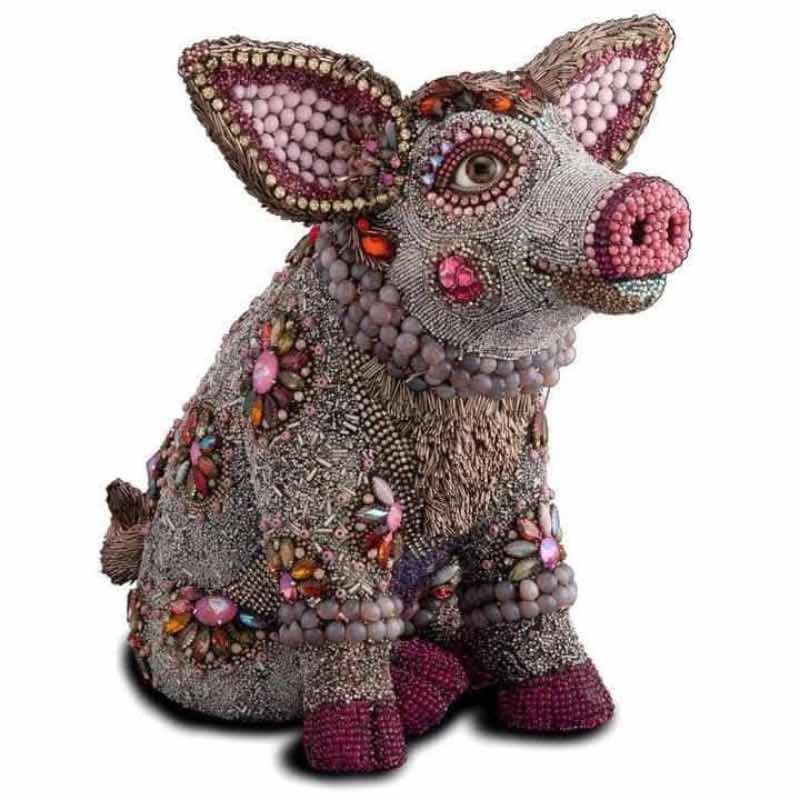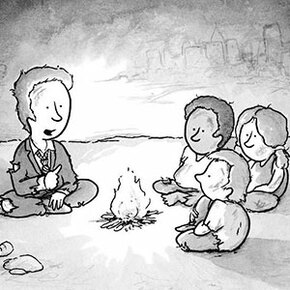
Back In 1872, A Boy Was Found Living With Wolves And Eventually Became The Real-Life Inspiration For Mowgli
When growing, you’ve most likely read Rudyard Kipling’s famous 1894 work The Jungle Book or seen its 1967 movie adaptation. However, a fact that not many are familiar with is that the book was actually based on a real-life person. Many believe that the one that inspired Kipling’s book was Dina Sanichar, an Indian boy that was raised by a pack of wild wolves in the late 19th century. Sadly, instead of going on adventures with wild animals as the book and movie adaptations like to show, Dina suffered a much more tragic faith.
Many believe that Dina Sanichar was the real-life inspiration for Mowgli – although he isn’t the only child to be raised by wild animals

Image credits: Wikimedia Commons
Back in 1872, a group of hunters found Dina walking on all fours along with a pack of wild wolves

Image credits: Wikimedia Commons
Upon being spotted, the boy and the wolves retreated to a den but the hunters were determined to get the mysterious feral child. They tried to lure him out of the cave by setting it on fire and when the animals finally left their den, the hunters shot them and took the boy back to civilization.
Dina was around six years old at the time

Image credits: Listopedia
The boy was taken to an orphanage, baptized and given the name Sanichar, translating to “Saturday”, as it was the day he arrived there. In the following years, Dina had trouble adapting and was considered to have a low IQ. Despite all the orphanage workers’ efforts, the boy never learned how to speak or write.
The boy was used to getting around on all fours and communicated by making animal noises

Image credits: Wikimedia Commons
Eventually, he learned how to walk on two legs yet still preferred to walk around naked

Image credits: Wikimedia Commons
At first, Sanichar refused to eat cooked meals and only ate raw meat

Image credits: Listopedia
Even though Sanichar struggled to communicate with others, he made friends with another feral boy who was growing in the orphanage. The two formed a unique bond, with one even teaching the other to drink from a cup.
Despite his struggles with adapting to human culture, Sanichar managed to pick up smoking

Image credits: Wikimedia Commons
In his later years, the feral boy developed tuberculosis, most likely because of his smoking habit

Image credits: Wikimedia Commons
10 years of living among humans did not really suppress Dina’s wild side – he was still anxious and jumpy around people. His appearance was also quite distinctive – he had very large teeth, a low forehead and stood at just 5 ft tall.
The feral boy eventually passed away from tuberculosis in 1895, being just 29 years old

Image credits: Wikimedia Commons
Dina wasn’t the only boy to be raised by wild animals in India and there have been numerous reported cases throughout the years

Image credits: Wikimedia Commons
Four other feral children were discovered in India around the same time as Sanichar, with one of the most well-known cases being that of Amala and Kamala, two girls that were rescued from a pack of wolves in 1920. The girls also walked on four legs, only ate raw meat, and howled at the moon.
Stories of feral children raised by wild animals have inspired many writers, one of the most famous ones being Rudyard Kipling

Image credits: Wikimedia Commons
Kipling wrote The Jungle Book in 1894, 20 years after the feral boy was found, and the main character Mowgli is said to be greatly inspired by Sanichar’s story.

Image credits: Wikimedia Commons
Dina was taken back to society against his will, unlike Mowgli who left the jungle willingly

Image credits: Wikimedia Commons
Sadly, even though people tried to bring Dina back into society, having spent the first 6 years of his life among wolves had completely changed the boy and he never managed to adapt.
Despite peoples’ efforts, Dina never managed to adapt to human society

Image credits: Wikimedia Commons

















Got wisdom to pour?